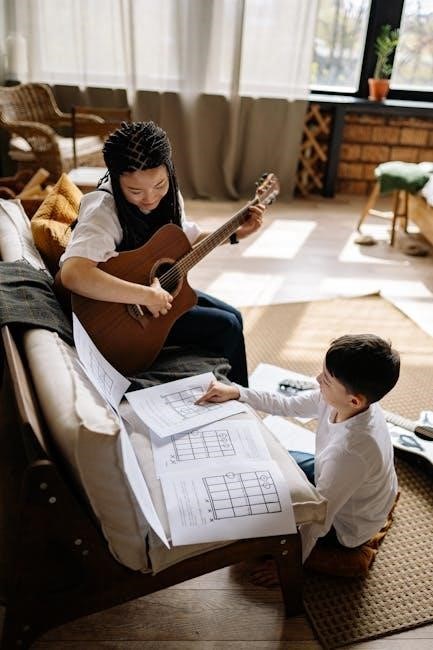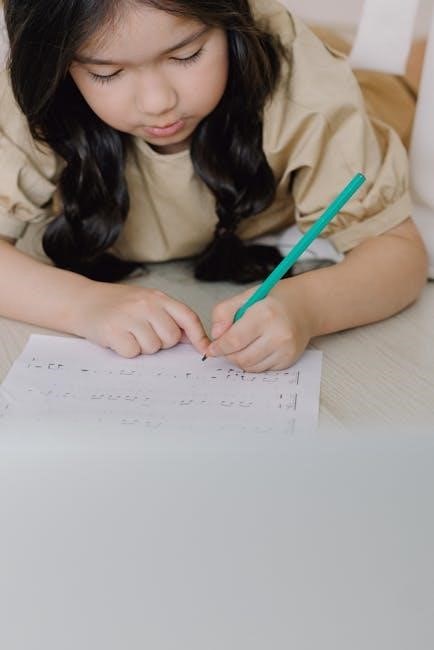Practicing sight words at home is essential for early reading skills and fluency. Use creative methods like flashcards, games, and hands-on activities to make learning fun and engaging.
Interactive Games for Sight Word Practice
Engage your child with fun games like Stair Chase and Coin Toss. Place sight word cards on stairs or floor, and let them practice by reading aloud for rewards.
Stair Chase

Transform your staircase into a learning zone with the Stair Chase game! Place two sight word cards on each stair. As your child climbs up, they pick a card, read it aloud, and collect it if correct. On the way down, they practice the remaining words. This activity combines physical movement with reading practice, making it both fun and effective. It encourages repetition and recognition, helping your child master high-frequency sight words in an engaging way. Over time, this game builds confidence and fluency, essential for early reading success. Make it a daily routine for consistent progress and enjoyable learning experiences at home.
Coin Toss
Make learning fun with the Coin Toss game! Place sight word cards on the floor or a table. Your child takes turns tossing a coin onto a card and reads the word aloud. If they read it correctly, they keep the card. This interactive activity turns practice into a game, keeping your child engaged and excited. It also introduces an element of chance, making it unpredictable and fun. Over time, your child will improve their recognition and fluency, laying a strong foundation for reading skills. This simple yet effective method is perfect for daily practice, combining learning with play in an enjoyable way.
Popsicle Sticks
Engage your child with the Popsicle Stick Activity! Write sight words on popsicle sticks and place them in a container. Add a few sticks labeled “DYNAMITE” for a fun twist. Draw a stick and read the word aloud. If it’s “DYNAMITE,” the child must return a stick to the container. This game makes practice exciting and helps build fluency. You can also use sticks to spell words or create simple sentences. The tactile nature of the sticks makes learning hands-on and memorable. This activity is portable and easy to adapt, ensuring consistent practice and progress in mastering sight words. It’s a simple yet effective way to keep your child motivated and engaged in their learning journey.

Creative Writing Activities
Use playdough, stencils, or Wiki Sticks to write sight words creatively. These tools make practice fun and engaging while helping children develop fine motor skills and word recognition.

Playdough Words
Playdough Words is a fun and hands-on activity to practice sight words. Roll out playdough and use a toothpick or small tool to write sight words on the surface. This tactile approach helps children engage with the words physically, improving muscle memory and recognition. You can also add a twist by using colored playdough for different word sets or creating word families. Erase the words and reuse the playdough for repeated practice. This creative method makes learning sight words enjoyable and interactive, while also developing fine motor skills.
Stencils and Wiki Sticks
Using stencils and Wiki Sticks is a creative way to practice sight words. Trace sight words with stencils on paper or whiteboards, helping children learn letter formation and recognition. Wiki Sticks, made of wax-coated strings, can be bent into word shapes on surfaces like paper or windows. This tactile method engages fine motor skills and visual memory, making sight word practice both fun and effective. Parents can reuse these tools repeatedly, reinforcing familiarity with sight words. This activity is perfect for children who enjoy hands-on learning and need extra practice with word recognition and spelling.
Scavenger Hunts and Exploration
Scavenger hunts make sight word practice engaging. Hide flashcards around the house and have your child find and read them. This interactive method boosts fluency and confidence.

Sight Word Scavenger Hunt
A Sight Word Scavenger Hunt is a fun and interactive way to practice reading fluency. Write sight words on index cards and hide them around the house. Provide your child with a list of the words to find. When they locate a card, they read the word aloud. This activity encourages movement and excitement while reinforcing recognition of high-frequency words. You can add a timer to challenge your child to find as many words as possible within a set time, making it a game that promotes both speed and accuracy in reading sight words. This method is effective and enjoyable for children, helping them build confidence in their reading abilities.

Outdoor and Physical Activities
Engage your child in outdoor games like hopping on sight words written with sidewalk chalk or tossing a ball with words for active learning and fun.
Sidewalk Chalk Words
Turn your driveway or sidewalk into a learning space! Write sight words using sidewalk chalk and have your child hop from word to word, reading each one aloud. This activity combines physical movement with reading practice, making it both fun and effective. For added challenge, encourage your child to hop on one foot or clap while reading. You can also write the words in different colors or sizes to make it more engaging. As they master the words, gradually introduce new ones to keep the activity fresh. This outdoor method makes learning sight words dynamic and enjoyable, while also promoting active play and reading fluency.
Sorting and Categorizing
Sorting and categorizing sight words enhance recognition and retention. Use games like word sorting to group words by similarity, helping children organize and memorize high-frequency words effectively.
Word Sorting Games
Word sorting games are a fun and interactive way to practice sight words. Create categories like “Words I Know” and “Words I’m Learning.” Write each sight word on index cards or use pre-made flashcards. Shuffle the cards and have your child sort them into the appropriate groups. For an added challenge, include a “Dynamite” card that requires your child to go back and sort again. This activity not only reinforces sight word recognition but also builds confidence and organizational skills. Make it more engaging by setting a timer or competing to see who can sort the fastest. Over time, watch your child’s ability to quickly identify and categorize sight words improve significantly. This simple yet effective method makes practice enjoyable and impactful.
Technology and Apps

Using educational apps provides interactive exercises, quizzes, and progress tracking, making sight word practice engaging and effective at home.
Sight Word Apps
Sight word apps are an excellent way to engage children in interactive learning. Many apps offer games, quizzes, and exercises tailored to practice high-frequency words. They provide immediate feedback, helping kids recognize and remember sight words quickly. Features like progress tracking, customizable word lists, and rewards motivate learners to practice consistently. Apps such as Teach Your Monster to Read and Sight Words Pro are popular choices, offering fun and effective ways to master sight words. These tools make practice enjoyable and accessible, ensuring children develop strong reading foundations at home.
Consistent practice and engaging activities help children master sight words, building a strong foundation for reading fluency and confidence. Celebrate progress and keep learning fun!
Tracking Progress
Tracking progress is key to ensuring your child masters sight words. Use a progress chart to mark words they’ve learned. Regularly review and test their knowledge to identify areas needing more practice. Celebrate milestones to keep them motivated. Timing their reading sessions can also show improvement over time. Keep a list of mastered words and revisit challenging ones. This consistent approach helps build confidence and fluency in reading. Make it fun by rewarding achievements with small incentives. Tracking progress ensures they stay on track and feel proud of their accomplishments.


